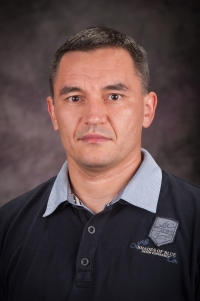
Email office@phys.ksu.edu for the Zoom address
Ultrashort light pulses provide unique experimental tools for studying rapidly evolving structure of matter. Recent advances in ultrafast laser and X-ray technology in combination with elaborated imaging techniques for photons and charged particles enabled resolving in space and time the motion of individual atoms in some exemplary chemical transformations. Generalizing such ultrafast imaging experiments and applying them to address critical scientific and technological problems of broad relevance is one of the central challenges for today's atomic and molecular physics, physical chemistry and x-ray science.
In this talk, I will present several examples illustrating the path towards direct and visual imaging of atomic motion in ultrafast photochemical reactions. The individual steps here include (i) recently obtained, unprecedentedly clear "static" images of polyatomic molecules at X-ray Free-Electron Laser (XFEL) facilities, (ii) current application of the same technique for time-resolved imaging of short-lived transient structures and new bond formation in an exemplary photochemical reaction using table-top optical lasers at the JRML, and (iii) perspectives for combining both of these steps in one experiment at XFELs and at the JRML. Finally, to illustrate the potential of applying similar ultrafast techniques for studies of nanoscale matter, a brief overview of our recent achievements in studying laser-driven gas-phase nanoparticles will be presented.
